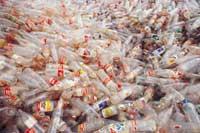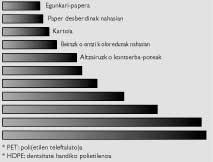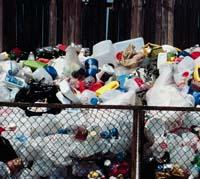Photography of plastic waste in Europe
2008/03/01 Kortabitarte Egiguren, Irati - Elhuyar Zientzia Iturria: Elhuyar aldizkaria
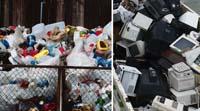
At the request of the European Commission, the Gaiker-Ik4 technology centre has analysed the environmental advantages and drawbacks of current and developing processes for the recovery of these plastics and/or polymers. This study will serve to remove a kind of "photo" of plastic waste from the countries of the European Union.
For this purpose, an inventory of the plastic composition of six types of plastic waste generated in the European Union in 2005 has been carried out and can be generated in the near future (2015): containers, domestic waste, waste of electrical and electronic devices, off-road vehicles, agricultural waste and construction and demolition waste. That is, the most common polymers in these plastic waste have been determined. On the one hand, it has been proven that low density polyethylene (LPDE) is the most present polymer in these plastic waste. And it is suspected that it will continue to be so, since this polymer is widely used in the manufacture of packaging, among others. On the other hand, it is foreseeable that the use of polyethylene tereftalate (PET) and polypropylene (PP) increases considerably in the coming years due to the increasing use of containers and automotive and the electrical-electronic sector respectively.
According to the data, and taking into account the residues of these six types of plastics, 23.6 million tonnes of plastic waste were collected in 2005, representing 34.8 million tonnes in 2015.

In this regard, the technologies currently used for the treatment of plastic waste, which are still being developed at the laboratory level and as a pilot experience, have been analysed. Of these, technologies have been selected to increase the degree of recovery of current plastic waste, such as mechanical recycling and chemical recycling, and has been deepened in the energy assessment and analysis of its technical characteristics and environmental services. As well as an analysis of the conditions and legislation that facilitate or limit the implementation of these technologies in each country, analyzing, among other things, the national infrastructures for the collection of these waste, their composition and quantities. Finally, a measurement of the environmental impact of plastic waste recovery has been carried out.
One of the main problems of plastic recycling is that plastic comes mixed with other products in the recycling plant. Transport is also an obstacle to the commitment to recycling, since the cost of transportation prevents the viability of certain processes. The report produced by the Gaiker-Ik4 technology centre reveals that there is a huge difference in legislation and resources between countries and others.
Main conclusions Main conclusions:
When preparing the inventory of plastic waste from the European Union, the data on volume of waste that is generated and processed in the recently integrated countries in the European Union is no longer available.
Of the six types of waste analyzed in this study, the packaging area is the one that gathers more documentation. According to reports collected annually in the European Union, in 2003 most countries met the minimum level of recycling of plastic waste of containers, which was 15% (except Finland).
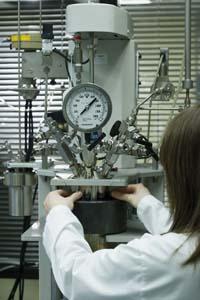
In the case of plastic waste of electrical and electronic devices and vehicles out of use, they are subject to general legislation at European level. The objectives of this legislation are the recycling, reuse and recovery of these waste. With this it is intended that the degree of recycling and recovery of plastic components is relatively high. However, this legislation is more recent than the legislation on waste packaging, so there is still no data available on this type of plastic waste that is generated and processed.
In the case of constructions, demolitions and agricultural plastic waste, however, there is no general legislation at European level that regulates these residues, and the data and studies that inform us about the volume of waste generated are of local character, and occasionally national data are collected.
In the case of Spain, for example, it is the fifth country that generates more plastic waste and one of the least recovered. There is, therefore, to do.

Gai honi buruzko eduki gehiago
Elhuyarrek garatutako teknologia



